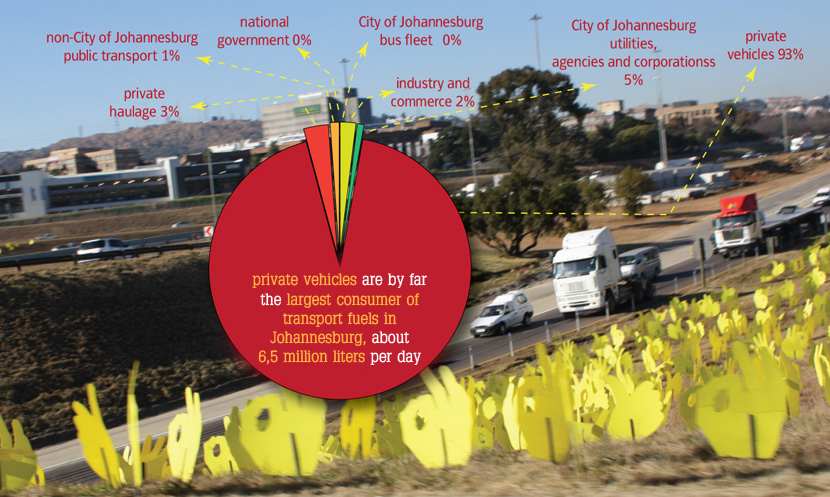
| introduction |
| background |
| role of cities |
| SA and the GCR |
| green initiatives |
| food |
| solar energy |
| energy efficiency |
| CSP |
| water and sanitation |
| waste |
| mobilising the region |
| mobilising the region in the right direction |
A 15% energy efficiency target in the transport sector could be equated with a 15% reduction in fuel consumption, and thus the following can be calculated: |
|
what are the growth constraints and sustainability challenges in terms of transport? |
In addition, the majority of public transport commuters have concerns that:
For example, more than half of taxi users are dissatisfied with the taxi service overall, compared to 45% of train and only 23% of bus users. GCRO (2009) ‘Quality of Life’ survey Thus, to re-orientate transportation in a green economy, transportation should be:
The current proposed target for “Transport Energy Efficiency” is a reduction of 15% by 2025 (Department of Local Government and Housing 'Gauteng Integrated Energy Strategy'). A simplistic view of this would be to argue for a 15% reduction in fuel consumption in the province. Recent State of Energy Reports by the three metropolitan municipalities in Gauteng collectively estimate that the largest consumer of energy in the three cities was the transport sector, at 60% of total energy consumption in 2007. This is massively up from just 34% in 2000, when industry was the biggest consumer at 58% of total consumption. Within the transport sector, the largest consumers of energy are private vehicles. The graph below shows data from the City of Johannesburg's State of Energy Report 2008, illustrating that private cars buy 93,4% of total fuel sales. This was approximately, 2,3 billion liters of petrol and diesel in 2007, some 6,5 million liters per day. |
| transport fuels sales by end-user sector in Johannesburg, 2007 |
|
| City of Johannesburg, State of Energy Report, 2008, p59 |
The table below shows the average fuel consumption per person per 100km travelled (Mohammed and Venter, 'Analysing Passenger Transport Energy Consumption from Travel Survey Data'). |
| consumption of motor fuels by different transport users in Gauteng |
|
Surprisingly, the fuel consumption by bus is higher than by minibus taxi. This points to large inefficiencies in the bus fleet. The new Bus Rapid Transport (BRT) system is likely to improve significantly on this figure. Travelling by taxi will save 4.3 litres per person per 100km travelled. To shift transportation towards a low-carbon environment, the following strategic changes should be addressed:
leading to:
|



